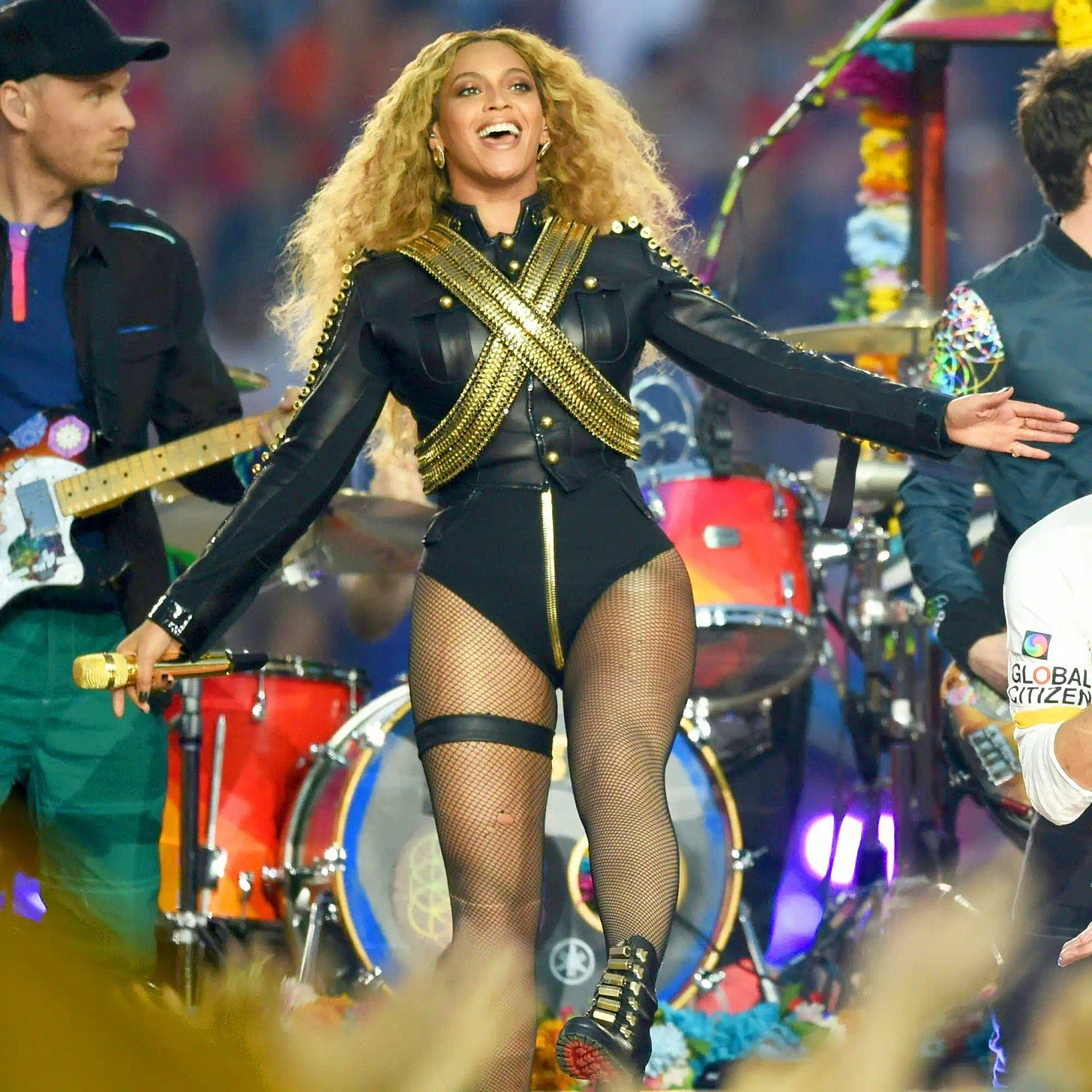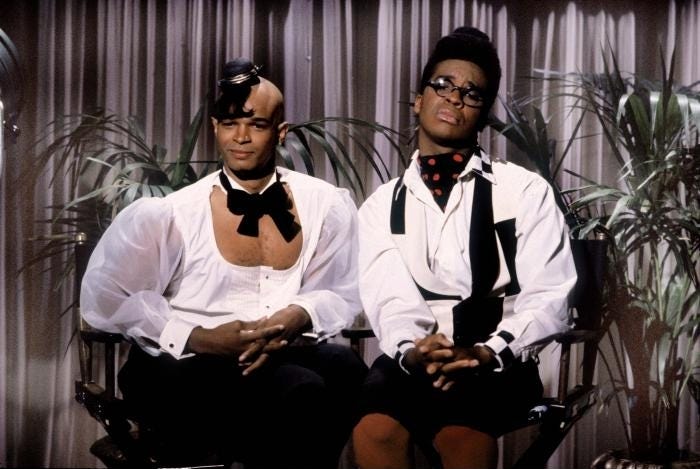Welcome to One Mic History Newsletter. Thank you for your continued support. Today, we delve into a fascinating story: How "In Living Color" created the Super Bowl Halftime show.
According to Homey Don’t Play That!: The Story of In Living Color and the Black Comedy Revolution, author David Peisner, In 1991, during one of FOX's regular staff meetings, FOX president Jamie Kellner started talking about the Super Bowl, Kellner believed his network could capitalize on the Super Bowl even though CBS had the rights to air the game. By offering an alternative to its boring halftime show.
In the 1980s and early 90s, the mid-game spectacles for the Super Bowl were little more than filler—something to occupy audiences before the second half. A 1988 show featured people Jazzercising; in 1989, a magician dressed as Elvis Presley (“Elvis Presto”) performed what was billed as the world’s largest card trick, in 1990, actors dressed as characters from the Peanuts comic strip cavorted across the field.
As Kellner tossed around ideas, he suggested doing a live episode of "In Living Color" The plan was to air this live special during the Super Bowl halftime and offer viewers an entertaining alternative. This matched well with FOX's image as the "Bad Boys of Television," known for trying bold things and shake up the industry's norms.
Keenen Ivory Wayans was all in. He knew this was a chance for the show to make a big splash by challenging the Super Bowl's halftime slot. And with the support of sponsors like Frito-Lay, willing to spend two million dollars on the venture, the team set to work.
In the lead-up to the 1992 Super Bowl, FOX was engaged in a flurry of promotional efforts for the "In Living Color" halftime special. The network orchestrated a significant publicity campaign, inviting celebrities to attend and billing the live broadcast as an event not to be missed. The level of anticipation surrounding the special was substantial.
However, the live format of the show presented concerns for both FOX executives and Frito-Lay, the event's sponsor. There were apprehensions about the possibility of unforeseen or controversial content being aired. To mitigate these concerns and maintain a semblance of control over the broadcast, a decision was made to air the special with a brief delay. This approach provided an opportunity to edit out any content deemed too provocative, safeguarding the interests of both the network and the sponsor.
When Super Bowl Sunday came around, CBS's decision to present a lackluster halftime show titled "Winter Magic" that featured skaters Dorothy Hamill and Brian Boitano, this show failed to resonate with the vast audience of football fans. In stark contrast, FOX made a strategic move by airing a live special of "In Living Color," a show teeming with energetic sketches and beloved characters.
The live "In Living Color" episode garnered tremendous viewership, with nearly 29 million viewers diverting their attention from the Super Bowl to watch the sketch comedy show during halftime. Scoring 11 percent of super bowls viewership. This dramatic shift in viewership did not go unnoticed by the NFL, prompting a realization of the urgent need to rejuvenate their halftime entertainment offerings to retain their audience against competing programming. This incident served as a pivotal moment in the evolution of Super Bowl halftime shows.
In response to the wake-up call, the NFL took a massive leap in 1993 by securing Michael Jackson to perform at Super Bowl 28. Securing a performance by Michael Jackson represented a significant departure from previous halftime shows, marking the first time an entertainer of his global stature was featured. This strategic move proved to be highly successful, redefining the standard for Super Bowl halftime entertainment and ensuring its place as a must-see event.
Michael Jackson's showcase was revolutionary, presenting a spectacle unrivaled in Super Bowl history. His dynamic performance, filled with his greatest hits, didn’t just captivate the audience—it skyrocketed the Super Bowl halftime show into a global sensation. His performance set a new standard, showing the world that the Super Bowl halftime could be a platform for the biggest music acts on the planet.
After Michael Jackson’s performance, the halftime show kept getting bigger and better. The NFL continued to bring in huge stars like Rihanna, Madonna, Prince, and Beyoncé. These performances transformed the halftime show into a cultural phenomenon, attracting viewers who weren't even football fans. The Super Bowl became not just a sports event but a must-watch entertainment spectacle.
So, thanks to a gutsy move by "In Living Color" Super Bowl halftime shows were forever changed. From a time when the halftime was just a break in the game to now, when it’s a major entertainment event. In an intervew with ESPN Keenen Ivory Wayans. “The NFL didn't acknowledge this for years,” “They really just huddled up and said, ‘Let's get Michael Jackson, and let’s make sure this never happens again.’ They just kept getting big names, like Prince and Madonna.”
Thank you for joining us today. For more engaging stories, visit One Mic History. Your continued support is greatly appreciated, we love you all.
-Countryboi







